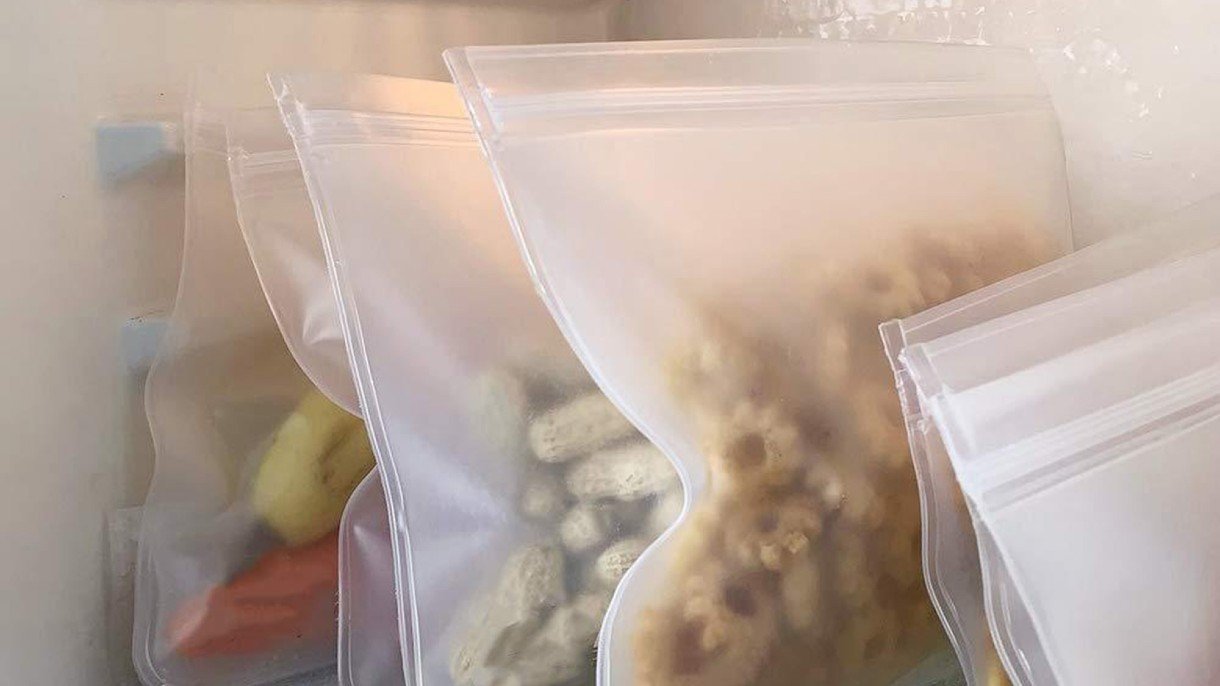Are Reusable Freezer Bags Dishwasher-Safe?

Reusable freezer bags are much better than single-use plastic bags, though it’s important to know how to properly clean them.
The last thing you want to do is grow bacteria in the bags which could cause you illness.
Food-grade silicone and PEVA (polyethylene vinyl acetate) are the best materials for reusable freezer bags because of how durable they are.
However, not all are dishwasher-safe.
How to clean reusable freezer bags
If your reusable ziploc bags claim to be dishwasher-safe, putting them in on occasion won’t do much harm, but make sure you check the manufacturer’s instructions.
Hand washing will always be better and is essential for freezer bags made from PEVA. This is because PEVA freezer bags can’t handle extreme heat like silicone can.
To clean your reusable freezer bag, fill it with hot water from the sink and leave it to soak in for sixty seconds. This helps it dislodge food scraps. Pour out the water and put in some warm water and some dish soap before scrubbing inside with a sponge or cloth.
To dislodge tricky food, you can also partially fill the bag with water, close it, and swish it around. Make sure to get into all the creases, otherwise, bacteria can grow and infect any food stored in the bag.
If you can turn the bag inside out you might find it easier to get into creases that way.
Once done, air dry your bag until fully dry before storing it away. To speed this up further and avoid leaving behind too much moisture, you can use a dry cloth to mop up and absorb any water spots.
If your bag has a zip seal, don’t put it in the dishwasher even if it’s silicone, as this can warp the seal. I recommend always hand washing to save yourself the trouble of replacing them too soon.
How long will reusable freezer bags last?
With proper care and usage, a PEVA reusable freezer bag will typically last 3 to 5 years, while a food-grade silicone bag will last 5 to 7 years.
It’s important to make sure you know what you can and can’t do with your freezer bags.
You should keep any sharp objects away from the bag because they can be punctured easily. Don’t clean them with sharp or hard bristles.
Because PEVA is biodegradable, proper care is essential to make sure it doesn’t degrade before going to the landfill.
Avoid extreme heat from dishwashers, ovens, and microwaves. While you can put silicone in all three, you need to check the manufacturer’s instructions to see what heat they’re safe at.
If the packaging claims to be “safe at 450 F”, avoid temperatures near that – otherwise, they start melting. And a melting bag will introduce chemicals to the food.
Are reusable freezer bags worth it?
Absolutely! Nature Code says it best: “The average savings of switching to reusable freezer bags and food storage bags is around 420 dollars for a five-year period.”
Both silicone and PEVA bags are recyclable (if sent to the right places) and are safer for the environment than traditional plastic bags. They outlive resealable plastic bags by years and are far more durable as well.
